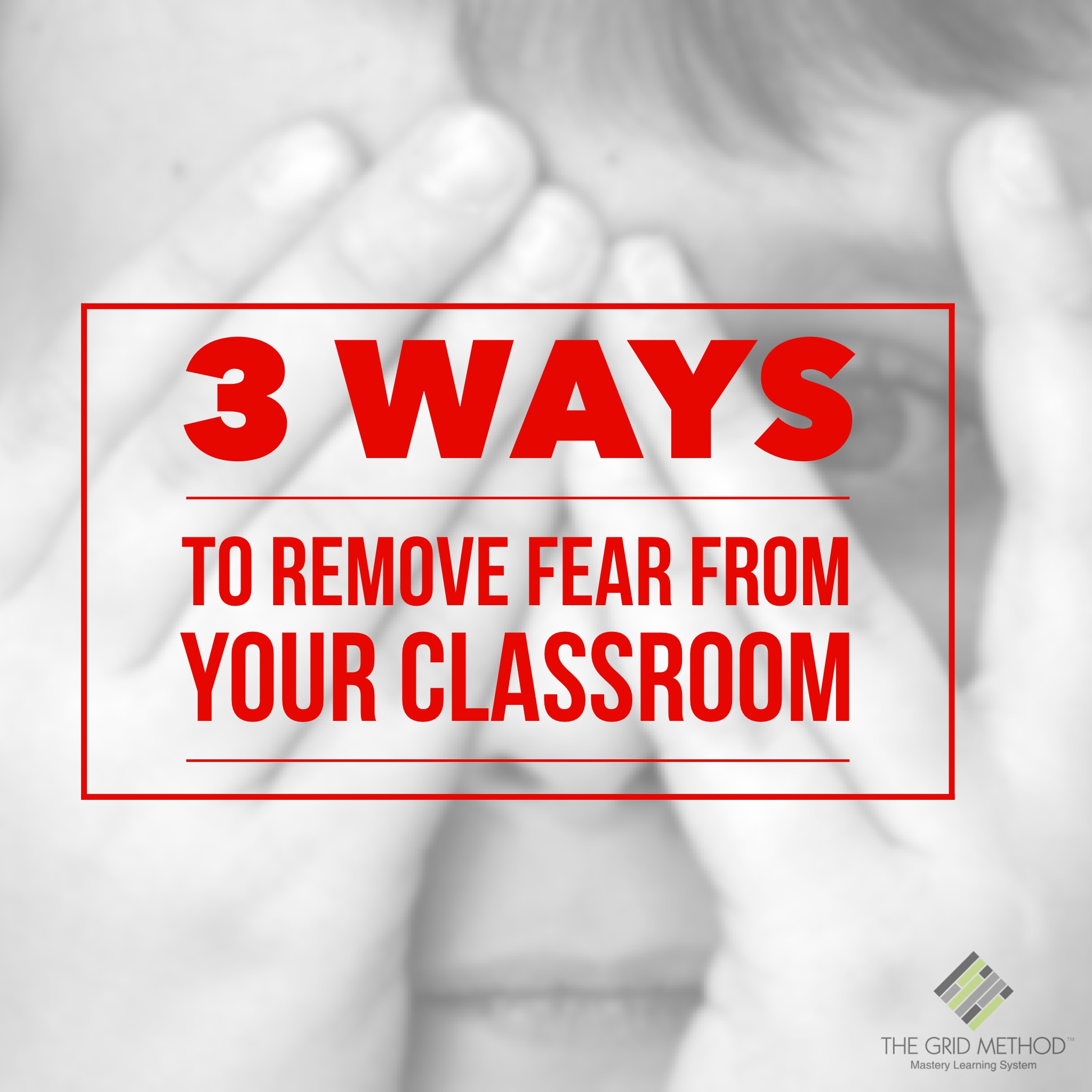Most of us have seen or experienced the traditional archaic model of education where a lesson is taught, notes are taken, quizzes or worksheets are handed out and grades are given. While this model works for some students, there are many students that completely shut down in this process. This process of judgement and single chances creates an immense amount of FEAR in students.
We have all had the difficult student that responds: “I’m not doing this!”, as you hand out an activity. This response is not bred out of defiance, but rather out of fear. Fear that they wont be able to perform the task, can’t read at the appropriate level, or simply a fear of failure. These fears drive a lot of management issues that occur in classrooms. If students can’t access content, they “fight back” due to the fear of failure. Some students have failed so many times that the fear is perpetual and constant throughout the school day.
This needs to change. Assessments and assignments need to transform from end games to learning opportunities. Students need to see the work that they do as progressive to their learning not terminal and definitive judgments on their abilities and intelligence. The culture of constant judgement (grades) and finite decisions based on performance defines an environment that produces fear. In any environment where fear is prominent, other negative emotional and social responses will arise.
In my classroom I created a system to remove the fear from learning. Here are a few things that have worked for me:
1. Allow students to work through content at their own pace
In a mastery based system, which lets them show me they know content on their own terms, instead of mine, my students have stopped stressing about how fast they can read or write or when the bell was going to ring. They focus on the work and the learning. For my students that are on task but work slower than most, this allows them to learn the content without the fear of a ticking clock. My students have increased their performance due to having more time to wrestle with and work through the learning opportunities provided.
2. Give multiple chances to show mastery
The idea that students stop learning after you assess them is not only outdated, but just plain wrong. The end-all-be-all that testing and assessments usually represent is threatening and demeaning to student growth and motivation. Instead of a judgmental grade on an assignment, along with comments most students won’t read, why not give one-on-one feedback and targeted corrective responses to help students fill in any gaps that exist until at least 85% mastery is shown on an assignment? Students should be given many attempts to show mastery on a learning opportunity, not just one.
The goal is that they LEARN not that they DO. You should only be worried about what the student knows, not how many worksheets or activities they complete. If they can show that they know a learning target then let them move on. One thing I always tell my students is, “FAIL stands for First Attempt In Learning.” They know all I care about is what they know. They also know I expect them to struggle, and that struggling is ok.
Once students are ok with struggling and failing (because they aren’t afraid of judgement or the finality of a grade slapped on their paper as they finish the last question) they work harder. In most cases, giving students multiple chances caused my students to give more effort on the first attempt, because they know they will be responsible for showing mastery and have to correct any mistakes. Allowing them to “turn in” work at the end of the day provides an enticing escape hatch for some students that you can easily take away by raising your expectations and allowing them to correct errors.
3. Increase student ownership
Increasing the ownership of student learning will always improve student performance. The important thing to understand is that when students feel they have the choice and freedom to fail, they will almost always decide not to. Its when we, as instructors, impose failure on students that we produce the fear of judgement.
If you develop routines, structure, and a systems in your class where students are almost fully accountable for their progress as individuals they will work harder. The traditional idea of education allows students to hide in a group while a group of 25 other classmates can hide their progress or lack thereof. By individualizing the delivery and completion of learning opportunities, students are forced to contend with their own struggles and overcome them. Over time, this greatly increases their confidence as they work through content individually.
Focus on student choices to reduce argumentation and defiance. Change a conversation from “GET TO WORK!!!” to “How can I support your learning to help you make a better choice today?”
OK…I know that sounds really fluffy and unrealistic, but one tactic I use that has been remarkably successful is the Notecard technique:
Notecard Technique: pre-write out or write out as needed, a notecard that states:
“I ________________ am refusing to work towards my learning goals today and admit that my teacher has offered to help me multiple times. I understand that this will negatively affect my grade and performance in this class.” X ___________________ (sign here)”
After offering to help students multiple times and ensuring that the assignment is properly modified and differentiated, I will place this on their desk without yelling or arguing and state: “Please, either get to work or sign this card because the school and your parents/guardians expect me to help you learn and if you choose not to then I need evidence that I did everything I could to help you.” I then simply walk away. 9 out of 10 times the student will read the card and get to work. They understand that THEY are making the choice; I’m not making it for them.
If you implement all of these techniques, or none of them, removing the fear from your classroom and from the learning that takes place in it will improve your relationship with your students, and their performance. As students start to trust you more and realize that you are there to support their learning, they will begin to work harder.
Their fear will turn into confidence. Removing the fear has helped me completely transform my career. How do you take fear out of your classroom? If you have any techniques that have worked for you email me and share!



